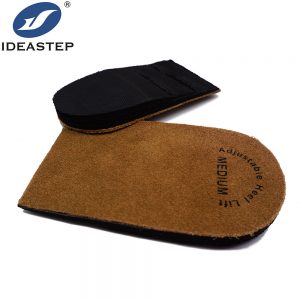
Heel lifts, also known as shoe inserts or heel wedges, are used for various purposes and can be beneficial for different individuals. Here are some situations where heel lifts may be recommended:
1. Leg length discrepancy
Heel lifts can help address a difference in leg lengths, which occurs when one leg is shorter than the other. Adding height to the shorter leg’s shoe, it helps to level the pelvis and improve the overall alignment of the body.
2. Achilles tendonitis
People with Achilles tendonitis may benefit from wearing heel lifts to reduce tension on the Achilles tendon and promote proper healing by elevating the heel slightly.
3. Gait abnormalities
Individuals with gait abnormalities such as pronation (inward rolling) or supination (outward rolling) of the foot might require a heel lift to help correct their gait mechanics and provide stability.
4. Plantar fasciitis
Heel lifts can alleviate pain caused by plantar fasciitis by reducing strain on the plantar fascia ligament that connects from the heel bone to the toes.
5. Calf tightness or muscle imbalances
People with calf tightness or certain muscle imbalances might find relief using a slight elevation in their heels provided by these inserts.
6. Foot conditions like Haglund’s deformity or retrocalcaneal bursitis
These conditions involve inflammation around the back of the heel bone, and wearing a raised heel insert can relieve pressure on affected areas.
It is important to consult with a healthcare professional such as an orthopedic specialist, podiatrist, or physical therapist who can assess your specific needs and determine if utilizing heel lifts would be appropriate for you.
If you need it, you can take a look at this page.
